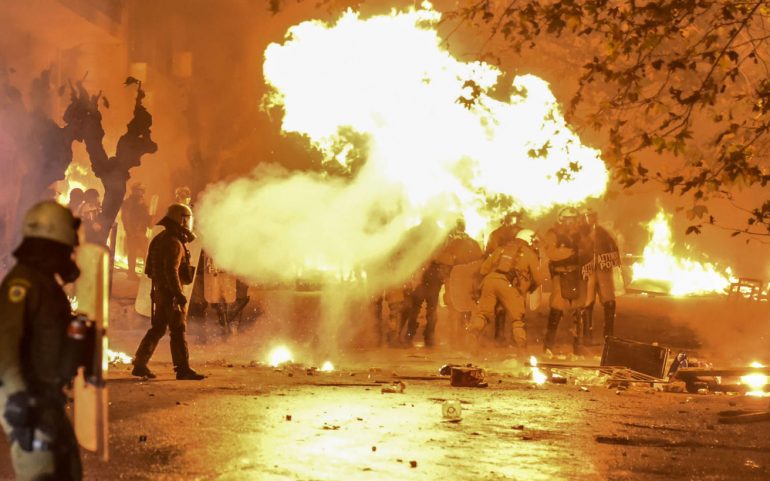The shots were heard on the night of December 6, 2008 at Exarchia, acted as a trigger that allowed the outbreak of an uprising that seemed to be "simmering" for a long time.
The murder of the 15-year-old then Alexandrou Grigoropoulos by the special guard Epameinonda Korkonea was the spark that lit the wick of an unprecedented explosion whose sound was heard all over the planet.
The clashes that followed in the following days, however, could have led to new tragedies. This is because between the many and difficult moments of the day, there were two incidents which, although largely forgotten today, could have led to new tragedies and as it is easily understood, in such a climate, this with in turn would lead to uncontrollable situations.
Those were the two moments when composure gave way to dangerous gun games.
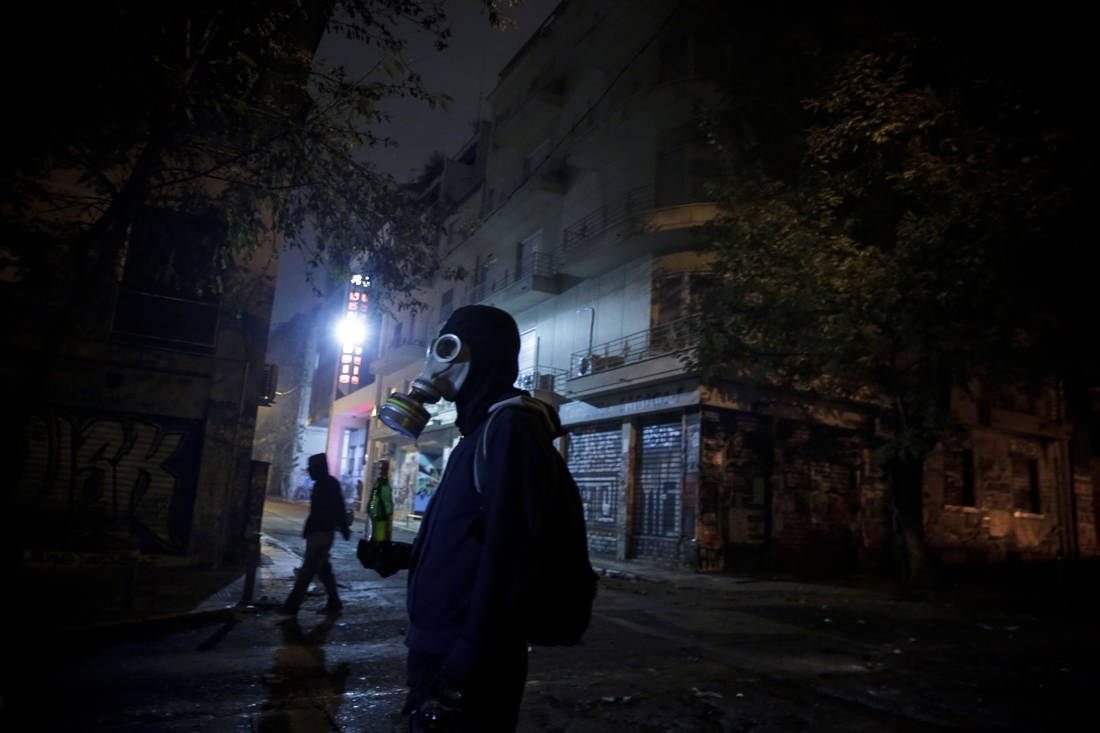
Sunday, December 7, 2008. Noon. After a night of fiery roadblocks and violent clashes in the center of Athens, thousands of people at the initiative of law students gather at the Museum, on Patision Street, in order to reach the General Police Directorate of Attica to protest against police violence that led to the loss of a child's life.
After the spontaneous clashes of the first night, this gathering was the first organized reaction to what had happened. This course, however, will never reach its destination. Almost immediately after the start of the march, groups of young people come out of the blocks and in a coordinated manner begin to break and burn whatever they find in their way.
Within a few minutes, Alexandras Avenue resembles a battlefield. The anger is huge. The checkmate they had a clear order to stay in their positions until the course reached just before the height of Charilaou Trikoupi and there to respond to the episodes and arrest those who caused them. The meeting of the two warring parties creates a hell.
One could hardly breathe from the tear gas and chemicals but also from the many and large fires. The protesters manage to reach the corner of the Supreme Court. There were very strong MAT forces that prevented them from advancing. Thus the incidents and clashes were "channeled" into the straits of the region.

At 16:36 in the afternoon, at the intersection of Kyrillou Loukareos Street and Alexandras Avenue, a MAT policeman pulls out his gun and marks the protesters! Everyone "freezes" in front of the image of the armed police officer a few hours after the murder of Grigoropoulos. Next to the bully, a colleague forms the gun with his fingers and he also marks a show of immaturity. Protesters try to hide behind parked cars for fear of the worst.
His photographer is at the spot Free Press Costas Tsironis who immortalizes the snapshot. After shouting and after realizing that it was perceived, the policeman puts the gun in its place, without fortunately shooting and leaves with the rest of the squad from the point of tension.
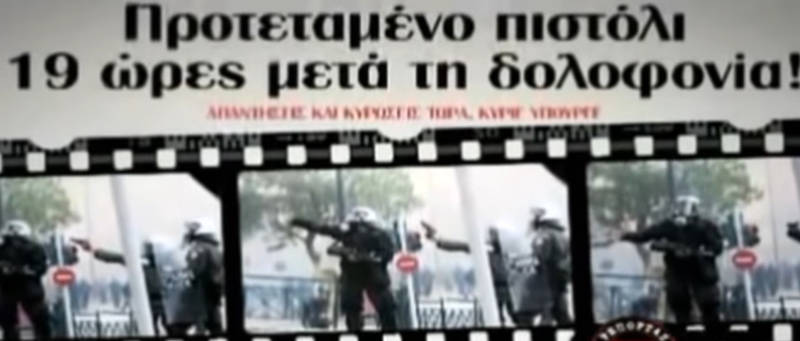
Indicative of the climate that prevailed in those days is that K. Tsironis was fired from the newspaper when he clashed with its management for the reasons that the specific document was not made public the very next day. There were many who thought that the newspaper tried to censor the photographer in order not to throw "oil on the fire". The photo was distributed to major photo agencies abroad and finally two days later was published in the Free Press.
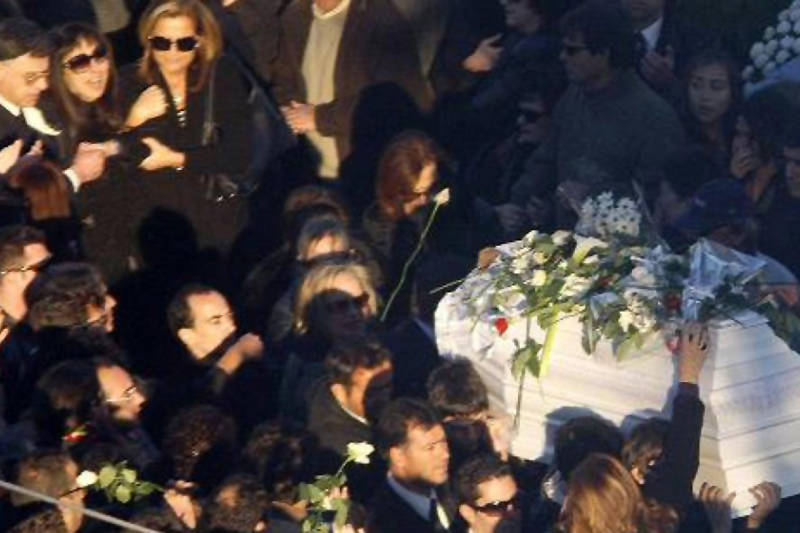
Tuesday, December 9, 2008 was perhaps the most emotional day. It was the day that thousands of people gathered in the cemetery of Paleo Faliro in order to accompany Alexis to his last home.
One can hardly forget the mother of the 15-year-old mourning the loss of her son and the Nikos Romanos, Grigoropoulos's friend, in whose hands he cooled down, to be one of those holding the white coffin.
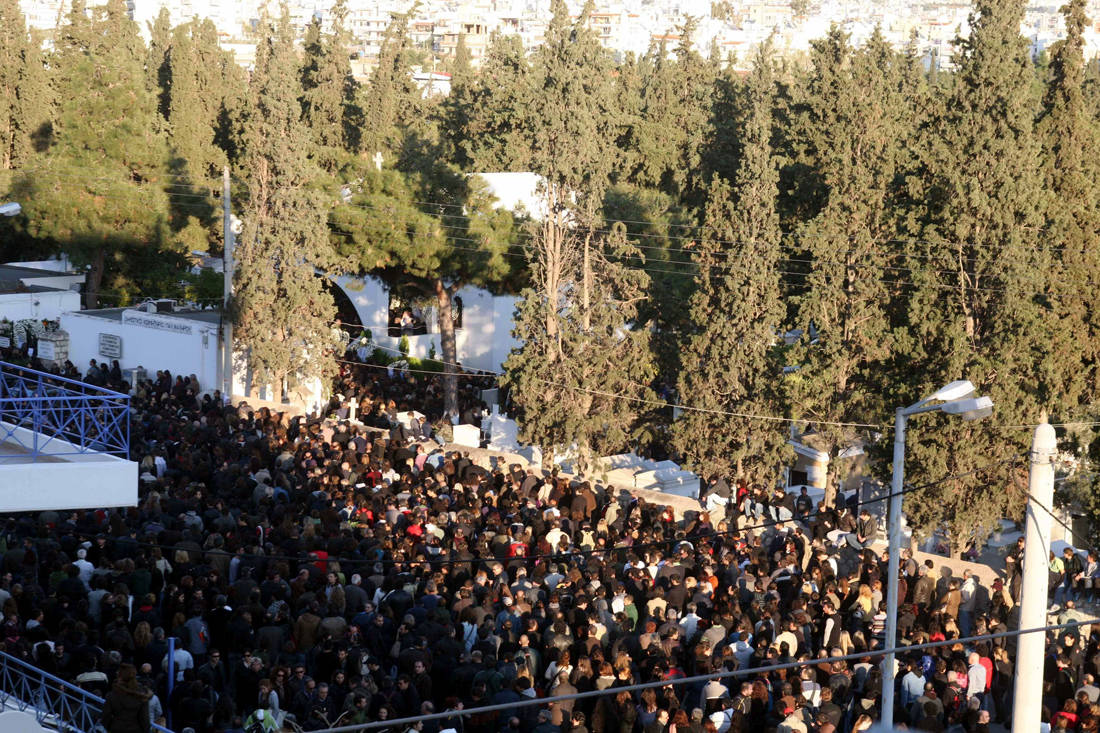
The funeral soon turned into another demonstration against police violence. The emotions were many and the intense presence of the police alone did not work.
When the ceremony was over and the family of the deceased left the scene, the first fiery roadblocks were set up and the episodes did not take long to begin. The more time passed, the more intense and violent they became.
Given that last night its toughest and longest clashes had been caused uprising, the police had now received the order for zero tolerance and harsh response to the riots.
Molotov cocktails, stones, roadblocks, chemicals, tear gas and flash grenades create another day of war. This time the battlefield is not the center of Athens or Exarchia but P. Faliro.
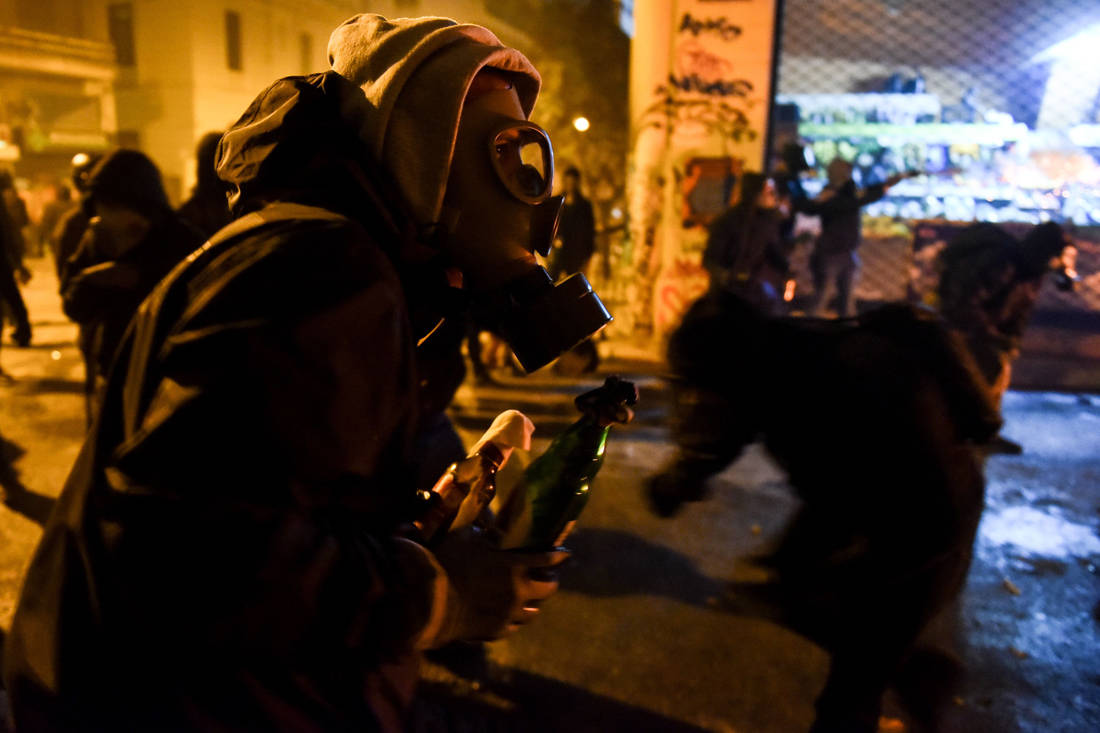
As time went on the intensity of the episodes decreased. At the intersection of Achilleos and Amfitheas streets, a group of about 200 people (mostly students) threw stones at MAT forces who responded with limited use of tear gas. Then, suddenly, her motorcycles appeared from Achilleos Street Group "Z". The drivers stopped, got off them, approached the assembled crowd and took out their weapons. After the initial "freeze", the gathered people reacted strongly to this image on the day of the funeral of a child who fell dead from police bullets, and moved against the "Zitades".
Then, to everyone's surprise, the police started firing into the air. This incident was also recorded, but this time not by a photographer but by the camera of the Mega TV station, which was located a few meters away from the spot.
As was perfectly normal, the gathered crowd tried to take precautions in this case as well, while immediately after, the police officers who starred in the incident, boarded their motorcycles again and left the area.
According to an eyewitness who had analyzed what had happened in the main bulletin of the Mega, a total of four "Z" police officers shot more than 15 times in the air. Police initially reported a shooting by a Group G police officer, but were later forced to admit that he was probably not the only one who fired but more, and a Sworn Inquiry was ordered to determine exactly what had happened.
For the sake of history alone, it should be mentioned that in both of these cases an investigation was carried out by the headquarters of Of the Greek Police, without any liability for a police officer.
